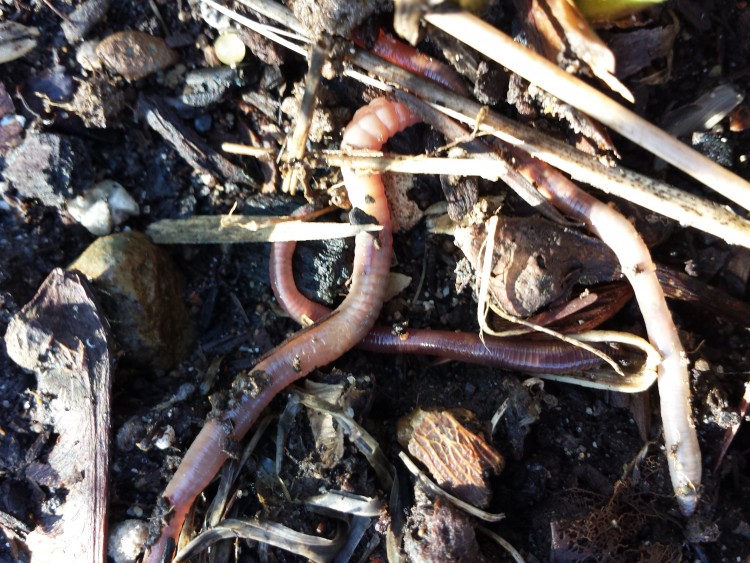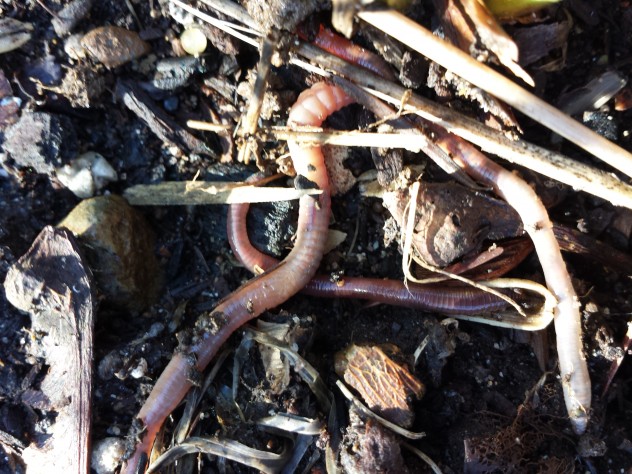Take A Wiggle On The Wild Side: Exploring Worms & Soil
Use these easy and engaging lessons to teach about soil through the experiences of an earthworm, one of the soil’s most productive, and numerous, animal inhabitants.
While you can teach about worms/soil anytime you like, March 15 might be a good day to start.
March 15 is Worm Day! 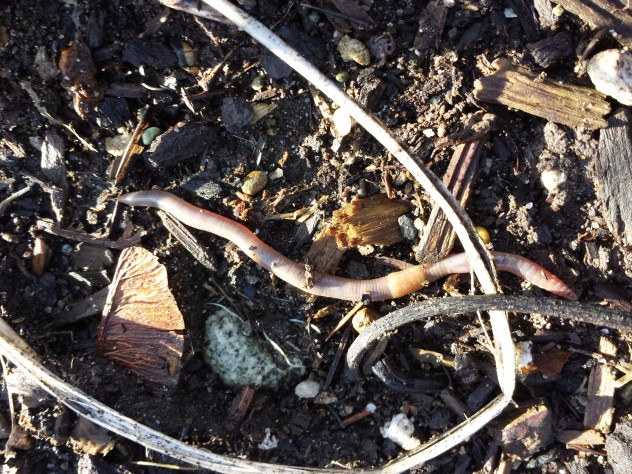
Really, honouring worms with a special day is the least we can do; I am glad someone thought of it. One of the many things we should be grateful for is the soil rejuvenating and enriching work of worms; it would be impossible to grow the crops required to feed the world without worms’ work. (Here is some information I found on the origin of worm day—I can’t attest to the accuracy of the information but it is an entertaining read.)
These activities are designed to engage the body, emotions and imaginations of your students in your local context—urban, sub-urban or rural. They employ the Imaginative Ecological Education, or IEE, approach to teach about worms and the science of soil composition. (Here’s a post that introduces IEE.) The activities can work anywhere with a little adaptation. In addition, there are many opportunities for extending the unit in cross-curricular directions—we would love to hear what you do with it. Leave a comment below!
 Click HERE you want an explanation of the principles of engagement at work in this Imaginative Ecological Education (IEE) unit. You don’t need to seek this additional information to use the lessons (just go for it)—but if you want to teach all of your own topics both imaginatively and ecologically then you might be interested to learn how cognitive tools of the imagination are employed: the story-form, abstract oppositions, mental imagery evoked from words, personification, sense of mystery… You might also start by following the Tools of Imagination Series.
Click HERE you want an explanation of the principles of engagement at work in this Imaginative Ecological Education (IEE) unit. You don’t need to seek this additional information to use the lessons (just go for it)—but if you want to teach all of your own topics both imaginatively and ecologically then you might be interested to learn how cognitive tools of the imagination are employed: the story-form, abstract oppositions, mental imagery evoked from words, personification, sense of mystery… You might also start by following the Tools of Imagination Series.
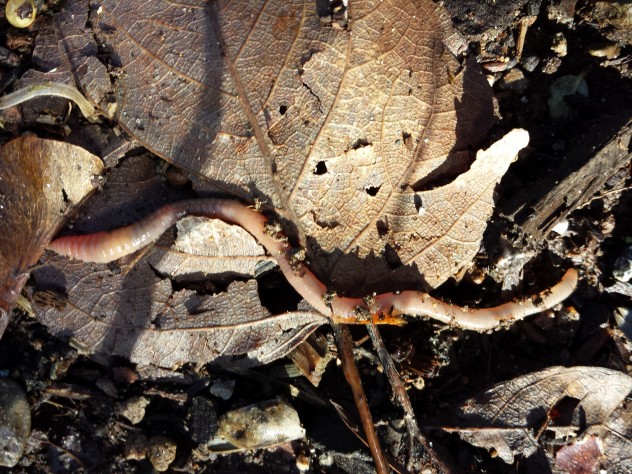 Quick Unit Overview
Quick Unit Overview
THIS POST (Part One): A fictional story entitled The Mis-Adventures of Lumbricus Terrestris that provides students with an emotionally engaging factual account of a day in the life of an earthworm. It sets the stage for later activities (plus any number of cross-curricular activities you can think of), and creates an imaginative context for learning about worms and soil.
HERE is Part Two: Activities to explore worm bodies, worm movement, and thoughts on how to have a final celebration of learning. Getting Dirty. Becoming Worms. Adopt-A-Worm, Honouring Worms and Soil.
The Story: The Mis-Adventures of Lumbricus Terrestris (L.T.)
Alternative title: Hungry, hungry, always hungry!
Notes for users:
✔ You will notice this story does not come with pictures. This is intentional. You can maximize learning if you use the words in the story to evoke images in your students’ minds. To maximize the mental imagery, be intentional in your reading: Pause to ask your students different questions as you go. (Some possible questions are identified in italics in the story below.) Take your time. Read slowly. Read and repeat. If possible, allow students to hear the story as they sit outside and can run their fingers through soil as you speak (this could also be modified for indoor teaching if need be by giving students a pile of soil to play with.)
✔ The story is quite lengthy—so decide how you want to introduce it to students. You may or may not do it all at one time. There are different ways students can interact with the narrative. For example,
you could read it in sections and ask students to describe the images that rise in their minds as they hear each section. Read slowly. OR
you might allow students to draw as they listen a second or third time through. Ask students to reveal through their sketches what they have learned about how worms survive or what they do in soil. Or what constitutes soil. Lots of options! OR
engage the body: role play being a worm—what would it feel like to encounter the world that way? Have your students enact what they hear from the story as you read.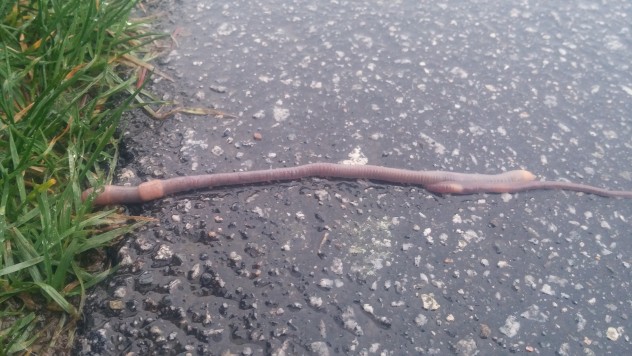
✔ Expand on different dimensions as your students wish. Additional information on worms is provided at the bottom of this post to support you.
✔ Don’t tell the students who they will study at first—begin with the riddle!
DOWNLOAD STORY HERE:
 Loading...
Loading...
7 Easy & Engaging Activities
- The kindness challenge. Respect the worms you find. Encourage students to remember this story—remember how they felt L.T.’s challenges, hopes, fears. You might also ask students if they would like to do worms’ work? No? Well then enable them to do it! Appreciate their role in our ecosystem. Of course, we want to acknowledge that there are many species/beings that contribute to a healthy, functioning Earth. Just because we don’t see them or know about them, doesn’t mean they don’t help us to live. Gratitude!
- Become reporters. Have students become reporters on scene—they have BREAKING NEWS to report. A survivor has been found following a heavy rain…with a new perspective have students express what they have learned about worm work in a “reporter” style. They might also do a “documentary style” presentation in which they reveal the interconnection between soil constituents and worm diet, movement, habitat and what living creatures constitute soil.
- Celebrate. In preparation for a celebration of worms’ work, students can identify 3 Facts About Worms that they think make worms worthy of greater respect and recognition. They can extend their study by surveying family or friends asking what they know about worm work—or what they feel about worms (can students change some stereotypes? E.g. worms are yucky?)
- Identify the extremes and limits of worms. Students can build a set of wonder-full worm facts that indicate what great things worms can do that humans (or other animals) can not. What is the hottest temperature life can survive? Did you know that Pink Pompeii worms live in BOILING water?
- Worming hunting/observation—An obvious immediate and on-going activity is for students to get outside and look for worms. Students could examine an earthworm up close to observe its body. They could touch the worms gently—noting the slimy or moist feel of the worm’s outer skin. If students can demonstrate care and attention then they might want to adopt-a-worm—what kind of habitat will be healthiest for the worm?
- Create wormbins: This is a hoot. You can collaboratively build “worm bins” so they may do further study of worms. There are 1,000 to 10,000 nematodes in every cubic cm of soil. You can bring these creatures out by putting a heat lamp above and something cool below a container of soil
- Green your practice/school: Start COMPOSTING Students may build composting boxes for the school and instigate a recycling program for biodegradable school wastes.
COMING NEXT: How to Engage Students With Worm Anatomy & Movement; Adopt-A-Worm; Play Worm Tap; Celebrate these Super Creatures. SUBSCRIBE below so you don’t miss the next set of activities!
More Information on Worms
The earthworm is, indeed, powerful. Its “soil science” plays a vital role in the maintenance of the soil. Earthworms tunnel deep in the soil. As they do so, they bring subsoil closer to the surface, mixing it with the topsoil. Earthworms secrete a slimy substance that contains nitrogen; this is an important nutrient for plants. Not only does the slime provide nitrogen for the plants, but it is sticky, helping to hold clusters of soil particles together in chunks called aggregates. Earthworms digest the organic matter in soil, recycle the nutrients and make the surface, or topsoil, richer and better for plants to grow in. It is estimated, in fact, that each year 15 tonnes of dry soil in every acre of land pass through earthworms. Earthworms’ work is, thus, closely tied to human survival. Without the soil-rejuvenating and enriching work of worms it would be impossible to grow the crops required to feed the world.
An earthworm’s work requires great strength. It is the truest of miners—working in moist, dark channels beneath the surface, away from the light of the day.
ABOUT THE SLIMINESS: L.T. needs to be slimy; sliminess is, of course, essential for earthworm survival. Because they breathe through moist skin, being wet and slimy is very important. Too much moisture can kill earthworms, though, as they need a moist but not too wet environment for survival. After a heavy rain and possibly saturated soil, worms come to the surface for a short time. They can drown if the soil is too wet. Once exposed to the air, worms are even more vulnerable. Paralyzed by light, they may be eaten by birds and other predators. Unable to move, the worms may dry out, and thus be unable to breath. Immobile, or heading back to wet soil at warp worm speed, they may be crushed by other animals and humans (or any number of human-made objects). Worms are not that big after all—a typical earthworm measures between 9 and 30 cm long. (One might encourage students to imagine being the person to discover the largest earthworm. It measured 22 feet from one end to the other!) 
